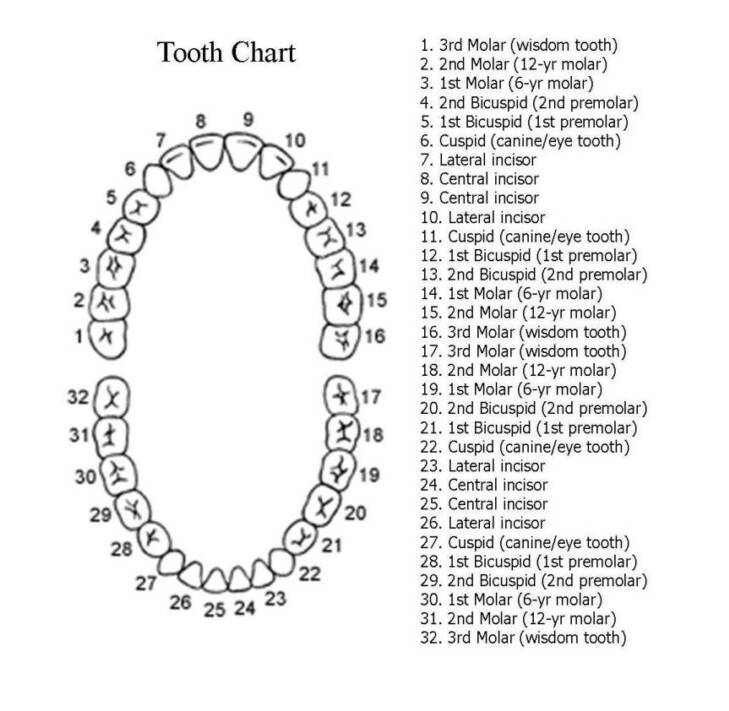
Newsletter Subscribe
Enter your email address below and subscribe to our newsletter

Enter your email address below and subscribe to our newsletter

The tooth numbering system is a standardized method used by dental professionals to identify and reference each tooth in the mouth.
In the Universal Numbering System, teeth are numbered from 1 to 32. The numbering starts with the upper right third molar (number 1), moves across to the upper left third molar (number 16), continues to the lower left third molar (number 17), and ends at the lower right third molar (number 32).
This system helps in precise documentation, treatment planning, and communication between dental professionals and patients.
Each tooth’s specific number corresponds to its position and type, such as incisors, canines, premolars, and molars. Understanding this system enhances clarity and efficiency in dental care.

Humans have different types of teeth, each with a unique function. These include:
The universal teeth numbering system is widely used by dental professionals. This system assigns a unique number to each tooth. The numbering starts from the upper right third molar (number 1), moving across to the upper left third molar (number 16), then continues to the lower left third molar (number 17), and ends at the lower right third molar (number 32).
Each tooth has a specific name based on its type and position in the mouth:
The mouth is divided into four quadrants for easier identification:
A dental chart helps in documenting and referencing the teeth. Understanding this chart and the numbering system assists in identifying each tooth quickly and accurately.
A tooth chart, also known as a dental chart, is a visual representation of the teeth in the human mouth. This chart helps dental professionals document and reference each tooth accurately. Here’s a detailed look at what a tooth chart entails:
A tooth chart is essential for documenting dental conditions, planning treatments, and communicating with patients. It ensures accurate records, aids in effective treatment strategies, and supports insurance claims. The chart helps both dentists and patients understand dental health and necessary procedures.
Humans have two sets of teeth in their lifetime. The primary (baby) teeth set includes 20 teeth. By age 13, most people have their permanent (adult) teeth, totaling 32 teeth. These 32 include 8 incisors, 4 canines, 8 premolars, and 12 molars, which encompass the 4 wisdom teeth that typically emerge in late adolescence or early adulthood.
Read more: How Many Teeth Do Humans Have
Fact Checked
Our dedicated team rigorously evaluates every article and guide to ensure the information is factual, up-to-date, and free of bias.
Updated Regularly
We update our articles and reviews regularly to ensure you have access to the latest data in the dental industry.
The content on Dental3DU’s blog is intended for educational purposes only. This information should not be relied upon as professional medical counsel. Be sure to always consult with your dentist about the dangers and benefits of any medication, treatment or procedure.
Dental articles in your inbox. Subscribe